Resistance/Resistor Color Coding: How to Calculate & How to Remember
One of the first things we learnt during the initial days of first year first semester's labs was "Resistances'/Resistors' Color Coding"

It is 99.99% true that no electronic circuit is completed without a resistor.
Resistor is an electronics component which decrease the amount of current passing through it and as a result it develops a voltage (voltage drop) in between both of its terminal. Seeing it in a broader view, resistor/s create a certain voltage between two points on an electric circuit in combination with other electronic components.
Even though, you can measure the value of a resistor with a Ohm meter or multi-meter, it is better to memorize its color coding for being more productive and if you're a student of Electronics, then it's a must.
The value of a resistor is used to represent on its body with bands of different colors.
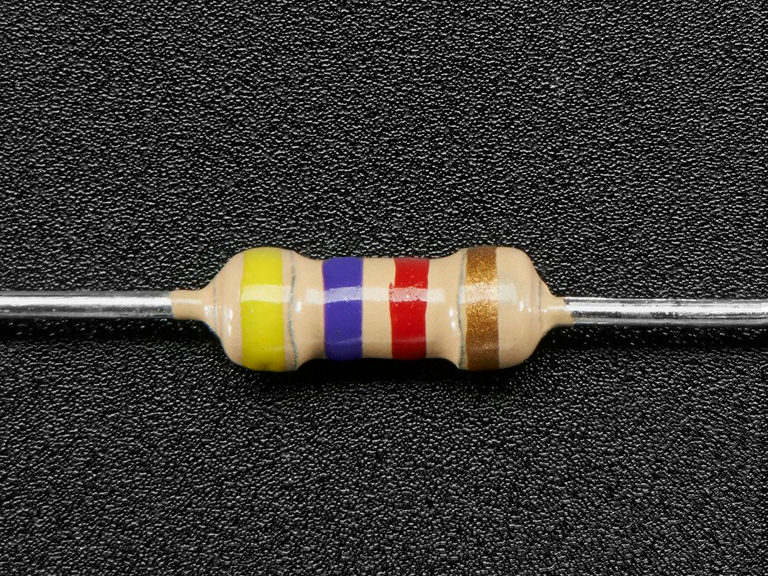
The resistor in the above picture is a 4-band resistor (Other type of resistors are 5-band resistors), and has a value of 4.7 KΩ (4.7 Kilo Ohm).
Let's see how it can be calculated and what are the values associated with different colors.
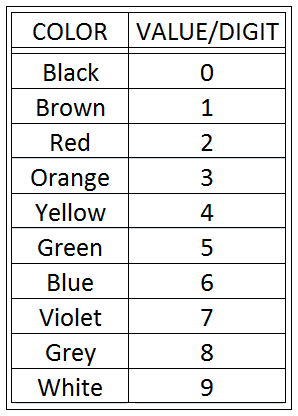
Remember, in a 4-band resistor, you'll find three colors closer to each other than the fourth one. To read or calculate the value of a resistor it must be held in the hand or placed on a surface in such a position that the side of those three color bands must be on the left hand side (just like in the second image of this post).

The value, 4.7 KΩ, of the resistor in the image is calculated with the color bands starting from the left.
- First color-band determines the value for the first digit (4 in this example).
- Second color-band determines the value for the second digit (7 in this example).
- From the Third color-band we get the value of "n" in "10n" or the power of 10 which is then termed and functioned as a "multiplier" (n = 2 in this example. So, multiplier = 10 2 = 100).
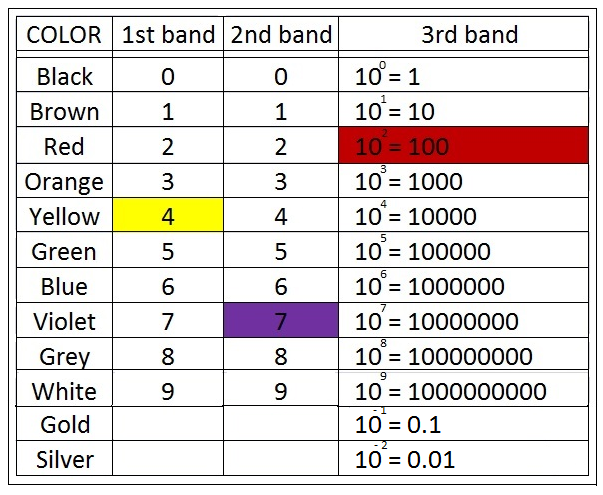
By multiplying 47 with 100, we get the value 4700Ω or 4.7KΩ.

During our studies, we used the following mnemonic to memorize resistor color coding.
Better Be Right Or Your Great Big Virtue Goes Wrong
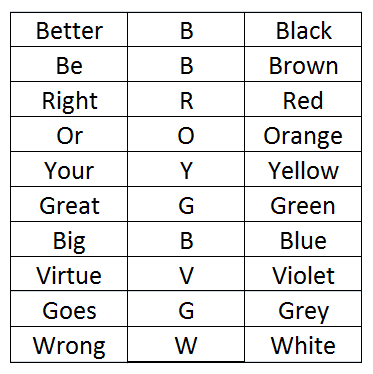
This is a popular mnemonic among global electronics community and you can find it online, with one exception though, online version includes "Venture" instead of "Virtue".
Thanks to it, I still remember resistor color coding.

Another factor which should be considered when calculating the value of a resistor is its TOLERANCE.
Tolerance of a Resistor is the measurement of the percentage of error in its value. Tolerance could be in the range from 0.1% to 20% plus/minus.
Meaning...
Accurate value of a 100Ω resistor with 20% plus tolerance is 120Ω (100 + 20), and with 20% minus tolerance, it will be 80Ω (100 - 20).
It is of utmost importance to count tolerance in the total value of the resistor because when designing/making an electronics circuit, a minor change in the value can change the overall output and can cause failure to get the intended result.

Tolerance of a resistor has its own color coding as well.
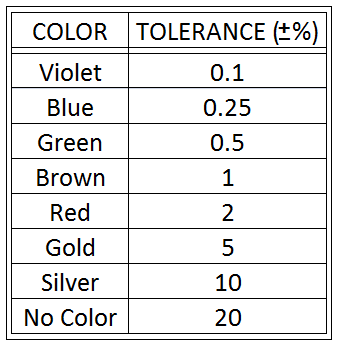
I don't know any phrase or mnemonic to remember the Tolerance Color Coding, do share in the comments if you are aware of any.
Thank you for using the recommended tag/s. This post has been manually rewarded with BUILD tokens in the form of an upvote. You can buy, stake, and exchange our "BUILD" tokens for steem on steem engine or SteemLeo
Build-it is a central hub for DIY and How-To projects. It's an opportunity to find and share the latest in DIY, and How-To tutorials. The recommended tags required when creating a DIY article are #diy, #build-it. #how-to, or #doityourself. Please subscribe to our community here
Chat with us on our discord and telegram channels Discord, Telegram.